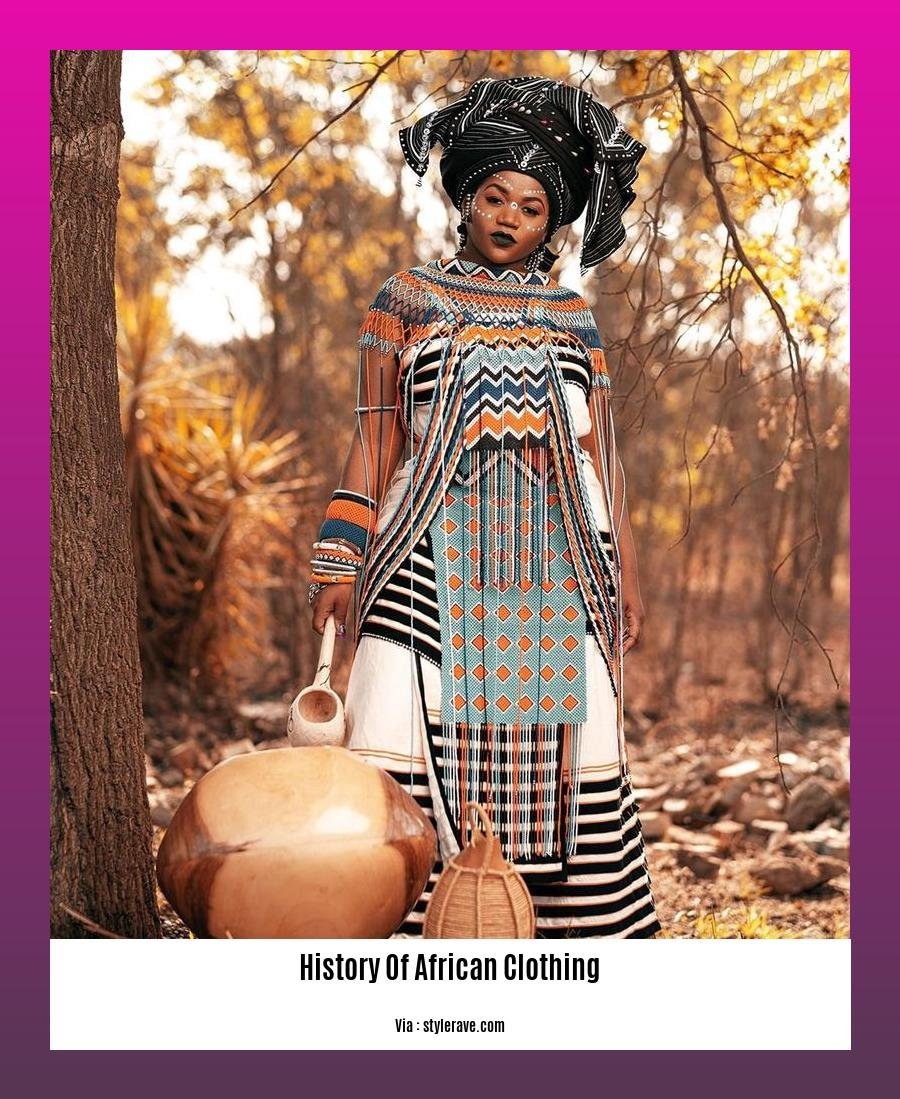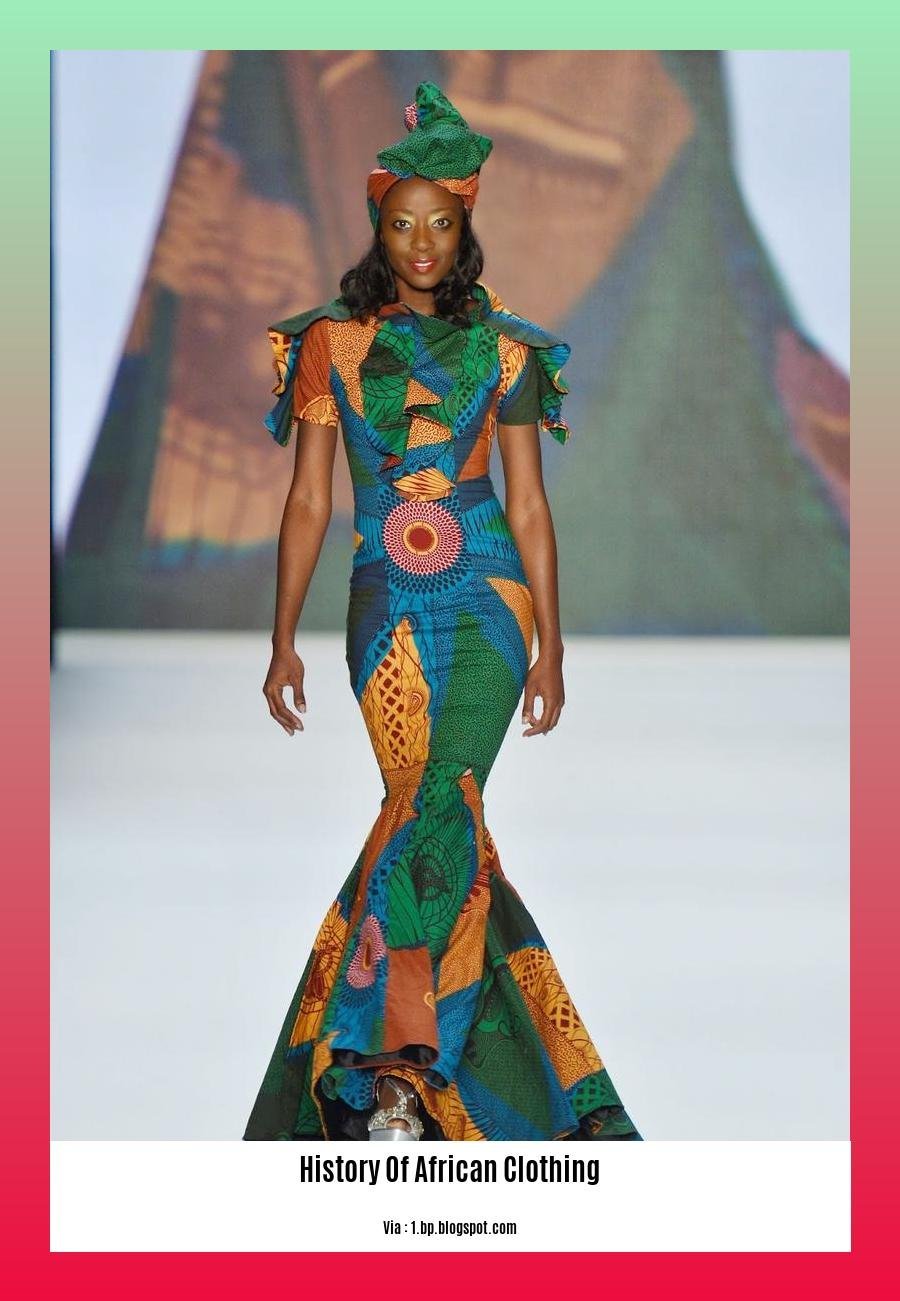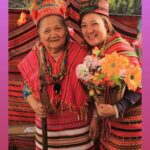Embark on a captivating journey through the vibrant tapestry of African clothing with “Unveiling the Rich History of African Clothing: A Journey Through Cultural Expressions.” Explore the profound cultural, social, and economic influences that have shaped the evolution of African fashion. Delve into the symbolism and craftsmanship of traditional attire, uncovering the stories woven into every thread. Witness the impact of African clothing on contemporary fashion trends and its enduring influence on the global stage.
Key Takeaways:
- African clothing showcases the diverse cultures and traditions of Africa.
- Each country has unique traditional clothing, often reflecting local textile crafts.
- In some regions, regional dress styles coexist with Western influences.
- Rural and urban societies have different levels of exposure to trade, leading to variations in clothing practices.
- Northeastern Africa shows Middle Eastern influences, such as the embroidered jelabiya.
- The djellaba, boubou, dashiki, Senegalese kaftan, and Nigerian head ties have similarities.
History of African Clothing

Africa, a continent blessed with diverse cultures, boasts a rich history of clothing that reflects its unique heritage. Each region, country, and ethnic group has its distinctive attire, showcasing the creativity and craftsmanship of its people. Let’s delve into the fascinating world of African clothing, exploring its symbolism, regional variations, and enduring influence on global fashion.
Diverse Expressions of Cultural Identity
African clothing serves as a vibrant expression of cultural identity, reflecting the traditions, beliefs, and social status of its wearers. Traditional attire often carries deep symbolic meanings, representing various aspects of life, such as marital status, age, or social rank. The choice of fabrics, colors, and embellishments is carefully considered, with each element contributing to the overall narrative of the garment.
Regional Variations: A Tapestry of Styles
The history of African clothing is a testament to the continent’s geographical and cultural diversity. From the flowing robes of North Africa to the vibrant prints of West Africa, each region boasts its unique styles and influences. In Eastern Africa, intricate embroidery adorns garments, while Southern Africa showcases a blend of traditional and Western influences.
Trade and Cultural Exchange: A Catalyst for Evolution
Africa’s rich history of trade and cultural exchange has played a significant role in shaping its fashion landscape. The trans-Saharan trade routes facilitated the exchange of textiles, techniques, and ideas between North and Sub-Saharan Africa, leading to the blending of styles and the emergence of new trends. Similarly, European colonization introduced Western influences that were gradually incorporated into local dress practices.
Contemporary Trends: Rooted in Tradition, Evolving with Time
In the contemporary era, African clothing continues to evolve, drawing inspiration from both traditional styles and global fashion trends. Designers are reimagining traditional garments, incorporating modern cuts, fabrics, and embellishments to create contemporary pieces that resonate with a global audience. This fusion of tradition and modernity has resulted in a vibrant and dynamic fashion scene that celebrates Africa’s rich heritage while embracing the ever-changing world of fashion.
Preserving and Promoting African Fashion Heritage
Recognizing the importance of preserving and promoting African fashion heritage, initiatives are underway to document, research, and showcase traditional attire. Museums, cultural institutions, and fashion organizations are playing a crucial role in safeguarding the knowledge and skills associated with traditional clothing, ensuring that they continue to be passed down to future generations.
To understand the evolution of African fashion and its global influence, dive into the history of African fashion.
To trace the rich history and cultural significance of Agusan del Sur, explore the history of Agusan del Sur.
Discover the fascinating journey of aviation in India and the role it played in shaping the nation’s transportation sector in the history of airlines in India.
History Of African Fashion And Culture

For centuries, African fashion and culture have been a reflection of the continent’s rich history, diverse traditions, and unique artistic expressions. Join us on a journey to unveil the splendor of African clothing, exploring the cultural influences and intricacies that make each garment a masterpiece.
Throughout the continent, clothing has served as a means of cultural expression, social status, and identity. From the vibrant prints of West African textiles to the intricate embroidery of North African kaftans, traditional African attire showcases a kaleidoscope of colors, patterns, and craftsmanship.
History: A Tapestry of Cultural Expressions
The history of African fashion and culture is closely intertwined with the continent’s diverse ethnic groups, each with its own unique traditions and style. In West Africa, for example, the vibrant colors and bold geometric patterns of fabrics like kente cloth and mud cloth have become iconic symbols of cultural pride. In East Africa, the Maasai people are known for their vibrant red shukas, a symbol of strength and resilience. Meanwhile, in Southern Africa, the Zulu people are renowned for their intricate beadwork and colorful traditional attire.
Global Influences and Cultural Exchange
African fashion has also been shaped by centuries of cultural exchange and global interactions. From the influence of Arab traders in East Africa to the arrival of European colonizers, external influences have left an imprint on African fashion.
Symbolism and Identity: Expressions of Individuality
In many African cultures, clothing carries deep symbolic meaning, representing status, age, marital status, and religious beliefs. For example, in some societies, the color white is associated with purity and is worn during special occasions such as weddings and religious ceremonies. In other cultures, intricate hairstyles and headwear hold significant cultural and spiritual meaning.
Contemporary Expressions: A Modern Twist
In recent years, African fashion has gained global recognition, thanks to the work of talented designers and fashion enthusiasts who are showcasing the continent’s rich heritage on international runways and red carpets. This contemporary movement celebrates the diversity and artistry of African fashion while incorporating modern trends and interpretations.
Key Takeaways:
Cultural Expression: African clothing reflects the continent’s diverse cultures, traditions, and ethnic identities.
Symbolism and Status: Clothing carries deep symbolic meaning, representing age, status, marital status, and religious beliefs.
Global Influences: African fashion has been shaped by centuries of cultural exchange and global interactions.
Artisanship and Craftsmanship: Traditional African clothing showcases intricate craftsmanship, such as weaving, dyeing, printing, and beadwork.
Contemporary Renaissance: African fashion is gaining global recognition, thanks to the work of talented designers who are showcasing the continent’s rich heritage on international platforms.
Sources:
African Clothing and Fashion: A Look into Different Cultures
African Fashion: A History of Cultural Expression
FAQ
Q1: How did the diverse cultures and traditions of Africa shape the evolution of its clothing?
A1: African clothing showcases the rich cultural heritage of the continent, with each country or region boasting unique traditional clothing styles. These styles are influenced by various factors, including local textile crafts, weaving, dyeing, and printing techniques. The diverse ethnic groups and tribes across Africa have contributed to the creation of a vibrant tapestry of clothing designs and styles.
Q2: How do rural and urban societies in Africa differ in terms of clothing practices?
A2: Rural and urban areas in Africa exhibit contrasting fashion trends due to differences in exposure to trade and fashion influences. Urban areas are more exposed to global trends, leading to a blend of traditional and modern clothing styles. In contrast, rural communities often retain traditional attire, preserving the cultural and historical significance of their clothing practices.
Q3: What are some examples of traditional clothing styles found in different regions of Africa?
A3: Traditional clothing varies widely across Africa. In West Africa, countries like Nigeria, Ghana, and Côte d’Ivoire have distinct regional dress styles that showcase intricate weaving and vibrant colors. The boubou, dashiki, and Senegalese kaftan are popular garments found in West Africa. In Northeastern Africa, particularly in Egypt, traditional women’s clothing reflects Middle Eastern influences, such as the embroidered jelabiya.
Q4: How has African clothing influenced contemporary fashion trends?
A4: African clothing has had a profound impact on contemporary fashion trends worldwide. Designers have drawn inspiration from the vibrant colors, bold patterns, and unique silhouettes of African garments to create modern and stylish clothing. The incorporation of African prints, fabrics, and design elements into mainstream fashion has contributed to the global recognition and appreciation of African cultural heritage.
Q5: What are some challenges faced by the African fashion industry?
A5: The African fashion industry faces several challenges, including limited access to resources, infrastructure, and financial support. Additionally, the industry struggles with issues such as counterfeiting, lack of intellectual property protection, and limited access to international markets. Overcoming these challenges requires collaboration, investment, and a concerted effort to support and promote African designers and artisans on both local and global platforms.
- China II Review: Delicious Food & Speedy Service - April 17, 2025
- Understand Virginia’s Flag: History & Debate - April 17, 2025
- Explore Long Island’s Map: Unique Regions & Insights - April 17, 2025


![A Stitch in Time: Exploring the Evolution of Clothing in India Through the Millennia [clothing in india history] clothing-in-india-history_2](https://www.lolaapp.com/wp-content/uploads/2023/12/clothing-in-india-history_2-150x150.jpg)













